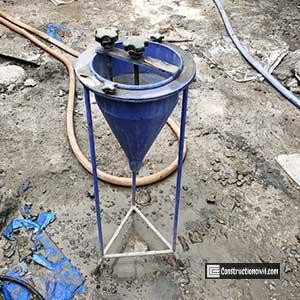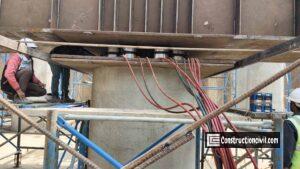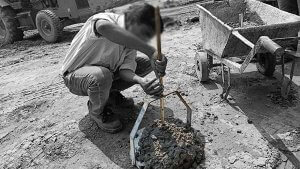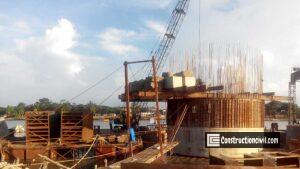Grouting in post-tensioning is necessary for preventing corrosion of the prestressing strand by surrounding it in an alkaline environment, filling all cavities with grout, and help to achieve an adequate bond between prestressing steel and concrete components. Grout is the primary protection for the post-tensioning tendons; therefore, utmost care must be taken to the grouting process. This psc girder grouting methodology can help us to execute the work successfully.
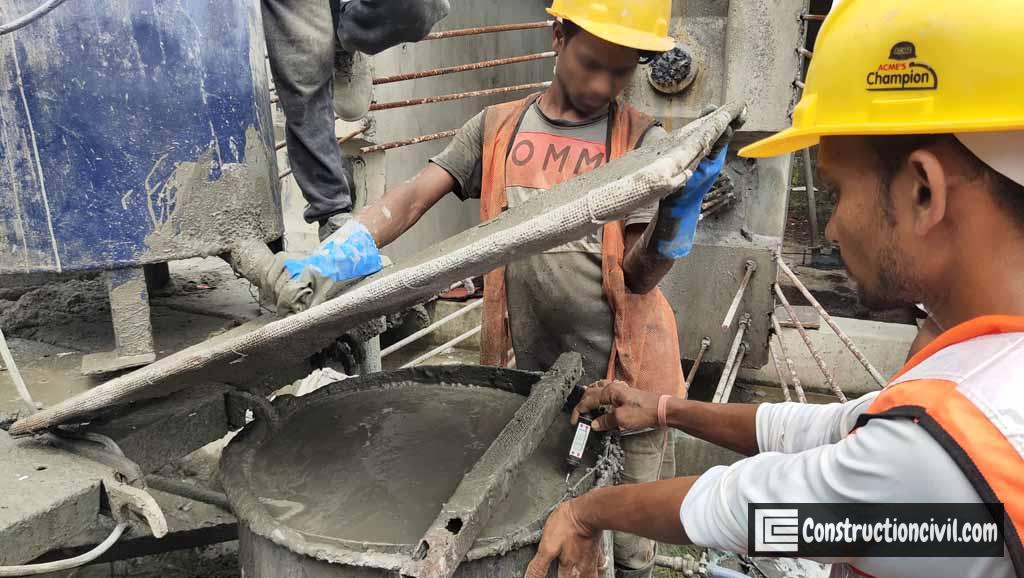
Also, Read: What is Prestressing of Concrete? – Method with Calculation
Properties of Grout:
- Usually, the W/C ratio should be as low as possible, consistent with workability. This ratio should not typically exceed 0.45.
- The compressive strength of 100 mm cubes taken during the execution shall not be less than 17 MPa at seven days.
PSC Girder Grouting Methodology:
Grouting Equipment:
- Mechanically powered grout mixer
- Grout pump
- Pressure gauge
- Nozzles and valves
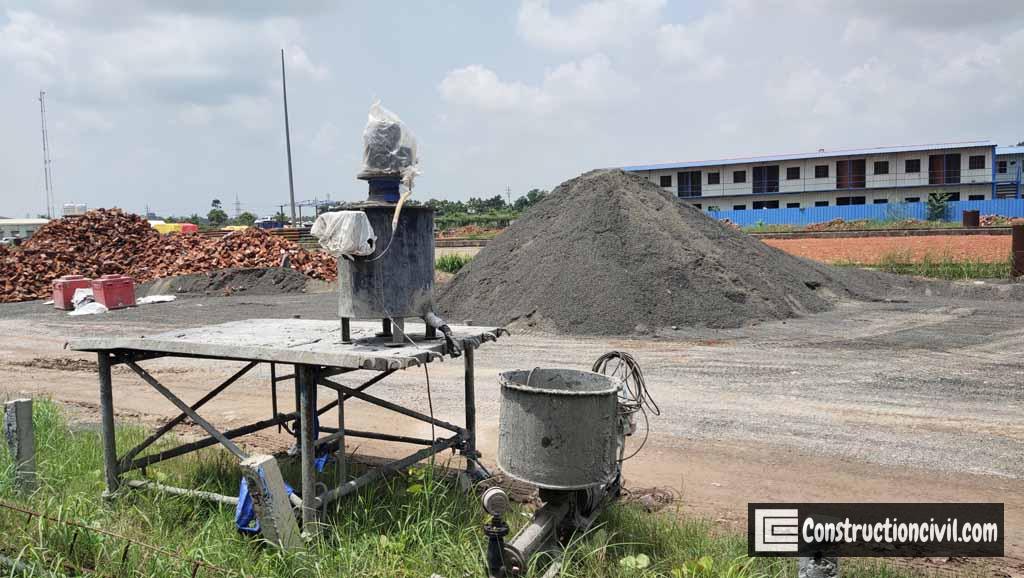
Also, Read: Environment Health and Safety(EHS)
Grouting Material for Post Tensioning:
Cement:
Ordinary Portland cement(OPC 43/53 Grade as per design requirement) should be used to prepare the grout mix. The cement shall have no false setting phenomenon, as fresh as possible and free from lumps. In addition, the cement should be free from chemical impurities like chloride and sulphate, which leads to corrosion of prestressing tendons.
Water:
Clean potable water, free from impurities, shall be used, where seawater shall be strictly avoided. Usually, the temperature of the grout mix should be 25 °C or less depending upon the design/site requirement. For temperature control, ice can be used with water if required.
Plasticised Expanding Grout Admixture:
Plasticised expanding admixture used in grouting must conform to IS 9102 and be free from chlorides, nitrates, sulfides, sulfites, or any other products that are likely to damage the prestressing steel.
- Grout admixture helps to compensate for plastic shrinkage and settlement in properly designed mix cementitious grout.
- It reduces the grout mix’s water/cement ratio, ensuring low permeability and long-term durability in service.
- It provides high grout fluidity with a low W/C ratio, making the placement or injection of the grout quickly and effectively.
- There are no chances of rust expansion to corrode and cause staining or deterioration in the grout as it has no metallic iron content.
- In spite use of chlorides, admixture composition provides high early strength gain in grouts.
Mixing of Grouting Materials:
- A mechanically powered grout mixer is generally being used for best results.
- For mixing capacity up to 50 kg, a slow speed drill fitted with a high shear paddle is suitable, where for Larger capacity will require a high shear vane type mixer.
- It is necessary to ensure adequate manpower available at the site depending upon mixing capacity to enable the grouting operation carried out continuously.
- Sometimes may require the use of a storage tank with provision for gentle agitation to maintain the flow.
- The designed water content should be maintained accurately in the mixer. As per the design recipes, after slowly adding the cement (and sand if required) and plasticised expanding grout admixture, mix continuously with water for 5 minutes, making sure that a smooth, even consistency is obtained.
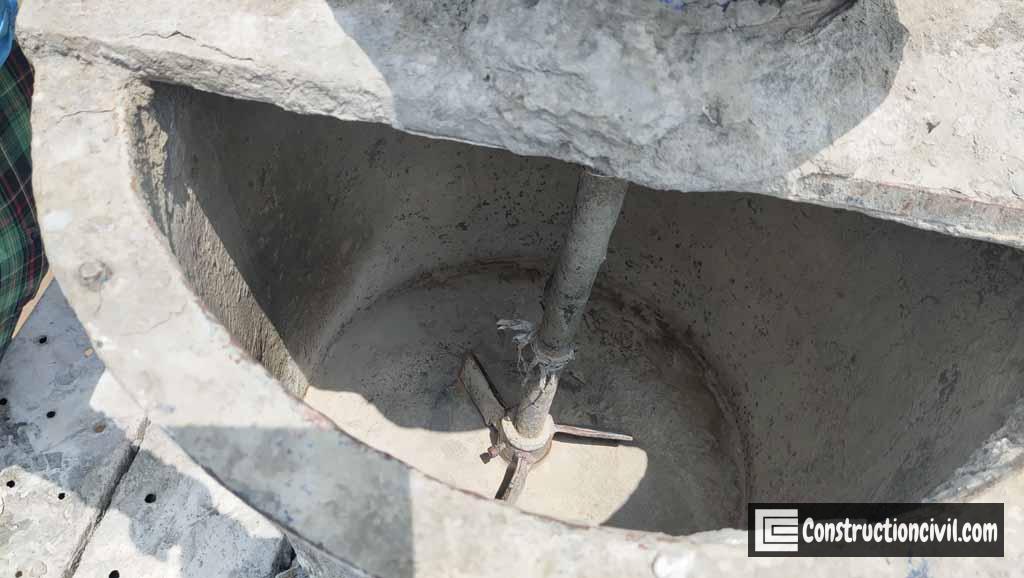
Also, Read: Rusting of Iron Rebar in Concrete – Special Repairing
PSC Girder Grouting Methodology: Procedure
- Grouting of pre/post-tensioned cable ducts shall be carried out as early as possible but preferably within two weeks.
- The duct of stressed strands/tendon shall be cleaned by water.
- Grout mix shall be prepared as per mix design having efflux value 11 sec to 18 sec.
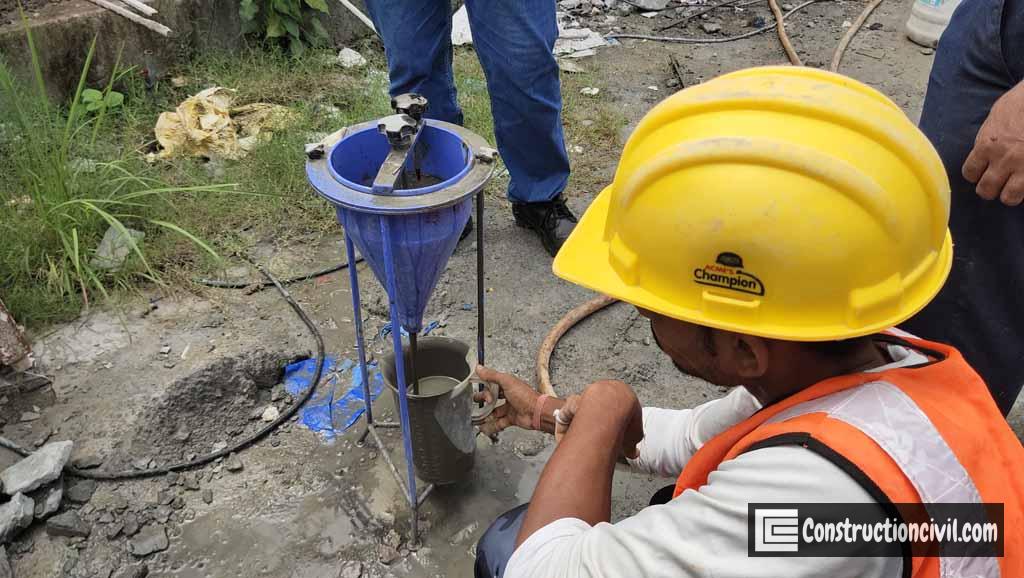
Also, Read: Types of Bridges Based on Span, Materials, Structural Arrangement etc.
- The compressive strength of the grout cube (100 mm) should not be shall not be less than 17 MPa at seven days.
- Prior to grouting, all the protruding strands shall be cut with a suitable abrasive cutter.
- Any rust/oil at the anchorage end shall be cleaned thoroughly.
- To restrict the exit of the grout mixture from the face of the bearing plates, those will be suitably sealed, especially to ensure that the grout mixture does not come out from the strands/ wedges.
- Nozzles and valves shall be fitted to the tube units at the grout holes provided at only the end of the cable.
- The ducts shall be flushed either with water for cleaning as well as for making the surface wet.
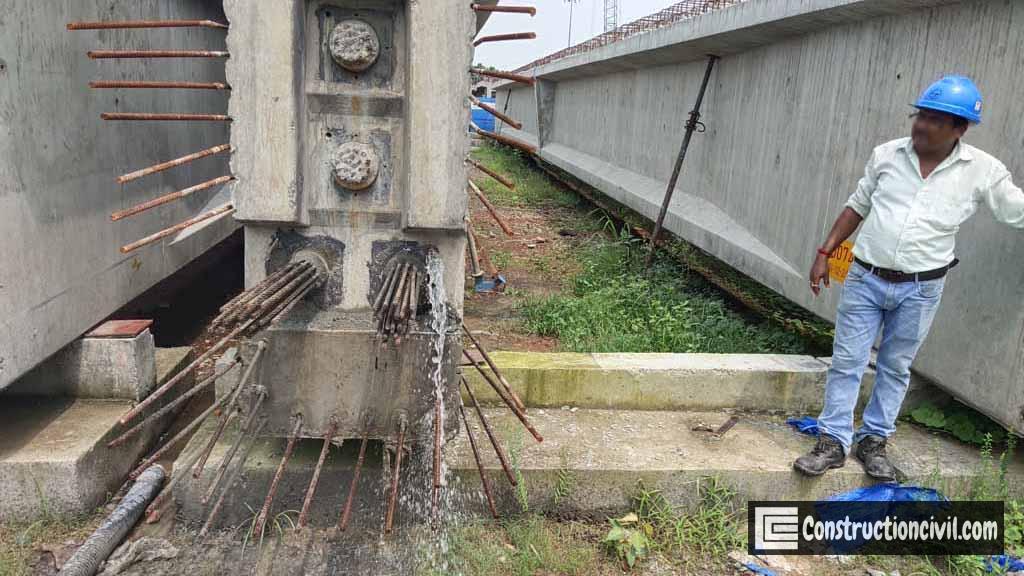
Also, Read: Crane Lifting Safety Procedure- Hazards & Control Measures
- The grout shall be prepared with ordinary Portland cement and potable water to keep the water-cement ratio per the approved mix design. Water shall first be added and followed by cement, ice (if necessary), & admixture (if specified).
- Mixing time shall be 2 to 3 minutes so that uniform and thoroughly blended grout is prepared.
- After mixing, grout shall be kept in a grout agitation tank for continuous movement.
- Grouting shall be commenced initially with a low pressure of injection until it comes out at the other end.
- Grouting of pre/post-tensioned cable ducts shall be allowed to flow freely from the other end until the grout’s consistency becomes almost the same as that of the injection end.
- The other end shall then be closed with a suitable plug. The air vents, if provided, shall also be checked for grout flow, free of air bubbles and subsequently plugged.
PSC Girder Grouting Methodology: Precautions
- As per the psc girder grouting methodology, the pressure gauge of the grout pump shall be calibrated before starting the grouting operation.
- If the ambient temperature exceeds 40°C, grouting operations should be done during morning or late evening hours. Otherwise, ice should be used for keeping grout temperature low. However, grouting should not be done if the temperature is below 05°C.
PSC Girder Grouting Methodology: Reference
